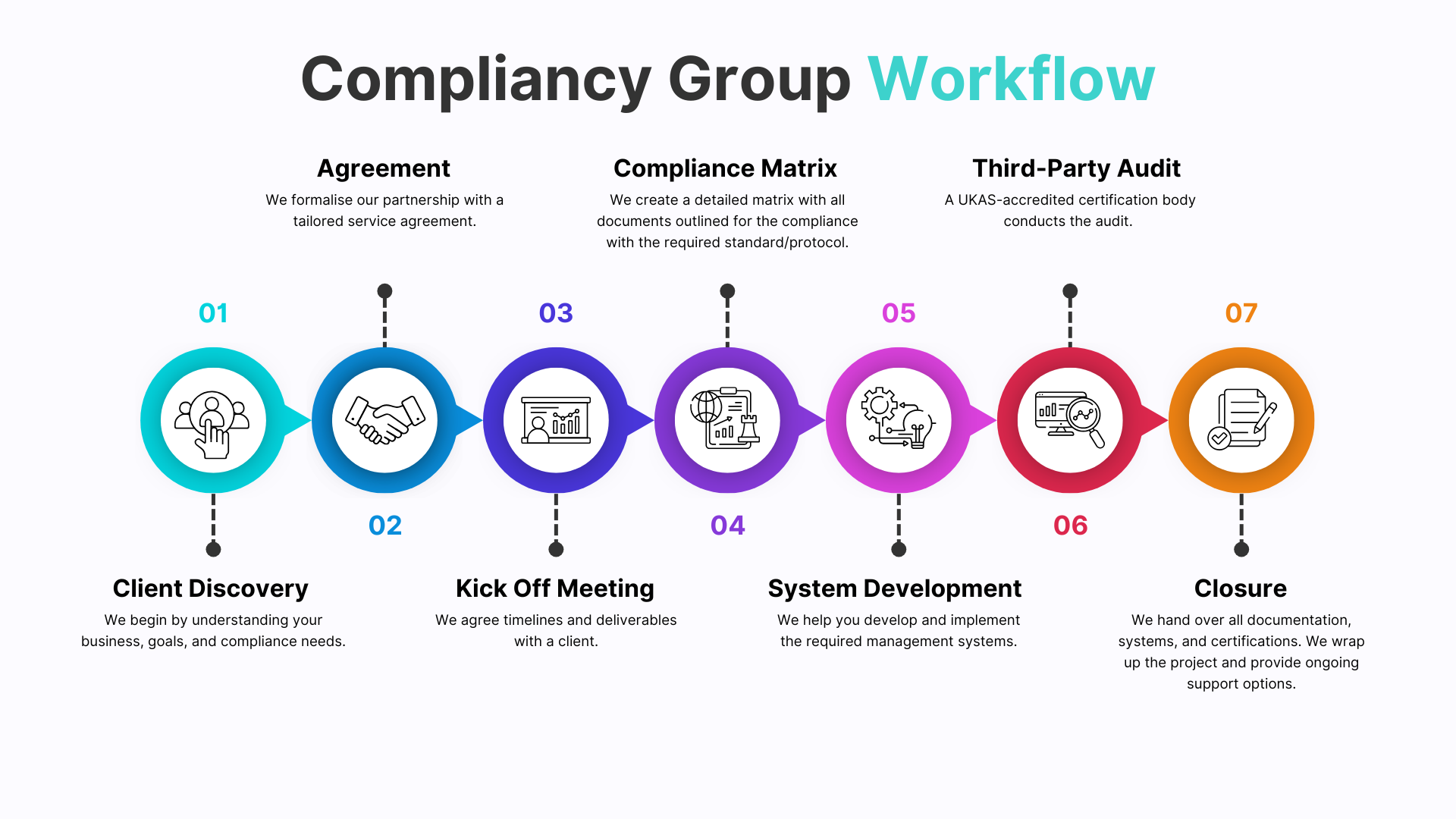We're Here To
Help

ISO 31000 is the internationally recognised standard for risk management, designed to help organisations identify, assess, and manage risks effectively across all operations. Achieving ISO 31000 certification demonstrates your business’s commitment to proactive risk management, resilience, and informed decision-making – trusted by clients, partners, and regulators worldwide. With ISO 31000, you strengthen your ability to anticipate threats, seize opportunities, and build a culture of continuous improvement. Compliancy Group guides you through every step – making ISO 31000 compliance clear, practical, and a real business advantage.
We understand the complexities of risk management and ISO certification. Our team brings hands-on experience with ISO 31000 implementations, audits, and sector-specific risk challenges.
No one-size-fits-all here. Whether you need gap analysis, risk assessments, system development, or ongoing compliance advice, our services are fully customised to your operations. We offer flexible support packages—from essential guidance to comprehensive on-site consultancy.
We work exclusively with UKAS-accredited certification bodies and maintain a 100% pass rate for certification assessments. Our clients trust us to deliver results that stand up to audit and regulatory scrutiny—helping you achieve, maintain, and leverage ISO 31000 compliance for business growth.
Compliance shouldn’t slow you down. We help you build resilient operations, reduce risk, and improve decision-making—so you can focus on delivering value and achieving your business goals.
You’ll work directly with our expert team, including leadership involvement from our CEO. We pride ourselves on responsive communication, clear guidance, and ongoing support throughout your compliance journey.
ISO 31000 certification opens doors to new clients, contracts, and markets that value robust risk management.
Demonstrate your commitment to proactive risk management and informed decision-making.
Systematic risk management helps prevent losses, disruptions, and compliance breaches.
Achieving and maintaining ISO 31000 sets you apart as a reliable and resilient partner.
Regular reviews and compliance checks foster a culture of ongoing improvement and risk awareness.
Strengthen Reputation
From gap analysis to audit support, our team ensures you’re always prepared and confident.
We streamline compliance processes, freeing up your team to focus on core business activities.
Services are tailored to your specific business needs, not generic templates.
Ongoing support, training, and regulatory updates keep your business compliant long after certification.
Our 100% certification pass rate and exclusive partnerships with UKAS-accredited bodies mean you’re in safe hands.

It improves performance, encourages innovation and supports the achievement of objectives. Principles include the requirement for the risk management initiative to be (1) customized; (2) inclusive; (3) structured and comprehensive; (4) integrated; and (5) dynamic.
While ISO/IEC 27001 excels at information security controls, ISO 31000 offers a broader framework for managing risks of all kinds, including operational, financial, and reputational.
ISO 31000 seeks to help organizations take a methodical approach to risk management by doing the following three key things: Identifying risks. Evaluating the probability of an event tied to an identified risk occurring. Determining the severity of the problems caused by the event occurring.
The 8 Principles of ISO 31000 are: •Integrity & ethical behavior. •Continual improvement. •Risk culture. •Integration. •Stakeholder engagement. •Structured & comprehensive approach. •Inclusive risk management. •Dynamic & responsive.
People confuse ISO 9001 and ISO 31000 as they both talk about risk. However, ISO 9001 assists organisations in building a QMS, whereas ISO 31000 helps businesses understand the principles, framework and processes of risk management.
Core principles of ISO 31000 •Integrated: Risk management is an integral part of all organisational activities. •Structured and comprehensive: A consistent and systematic approach enhances efficiency and results. •Customised: The framework should be tailored to the organisation's external and internal context.
Applying risk management based on ISO 31000 involves following a structured process with the following steps: 1.Step 1: Communication and consultation. ... 2.Step 2: Define scope, context, and criteria. ... 3.Step 3: Assess risks. ... 4.Step 4: Treat risks. ... 5.Step 5: Monitoring and critical analysis. ... 6.Step 6: Record and report.
It is not mandatory to apply ISO 31000 in your business in the United States. It is a set of guidelines and best practices for how to effectively manage risks in your company. What is the difference between ISO 31000 and ISO 27001?